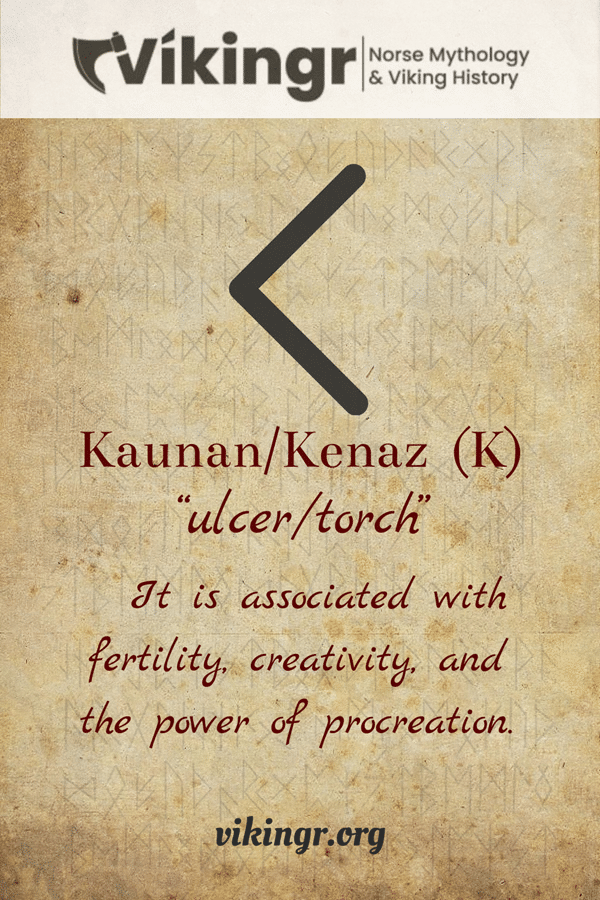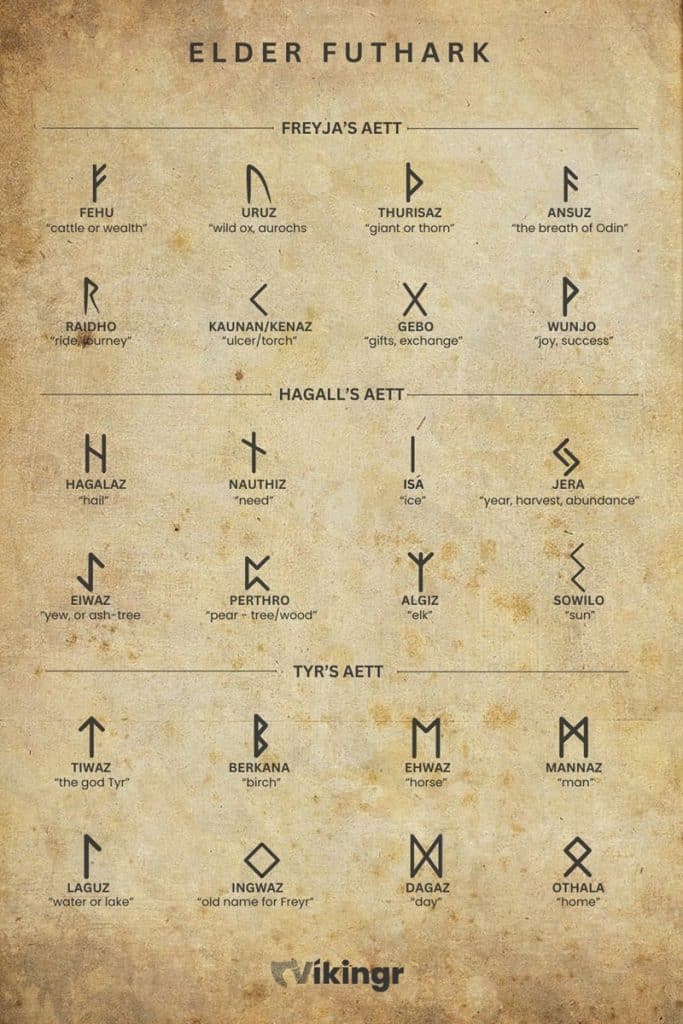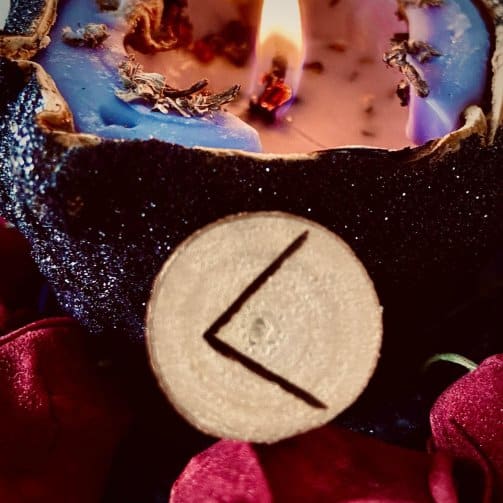Kenaz is the sixth rune of the Elder Futhark, found in the first of its three aetts. It has some interesting symbolism associated with light, knowledge, and learning. In this post I will explore both its origins and deeper symbolism.
Kenaz: Background and Description
The Elder Futhark was a runic system used by the Germanic tribes for the earliest Nordic inscriptions. Kenaz, the sixth rune in this sequence, follows Raidho and precedes Gebo. The name comes from Old Norse, translating roughly to “torch.”
The Elder Futhark was widely used across Europe, with archaeological evidence of its use found from Scandinavia to the British Isles across all of Northern Europe. Kenaz, like its runic siblings, was a part of this widespread system, its etchings found on everything from monumental runestones to simple everyday objects.
The etymology of “Kenaz” is intriguing. Rooted in the Proto-Germanic “*kaunan,” it’s associated with light, knowledge, and learning. This gives us a glimpse into the values of the ancient Germanic peoples, for whom wisdom and understanding were as vital as a torch in the dark.

Graphical Representation
Visually, Kenaz is a simple yet powerful rune. The easiest way to describe it is as the mouth of a Pac-Man figure. If you don’t understand that reference, picture a V lying on its side, its opening or mouth facing the right.
Historically, people have discovered variations of Kenaz’s design. Some inscriptions show the rune with a more curved diagonal line or with the line crossing from the top left to the bottom right. However, the traditional form remains the most recognized and used.
Phonetic Value
In the Proto-Germanic language, Kenaz represented the sound “k,” as in “knowledge.” As Germanic languages evolved, so did the pronunciation of this rune. In Old Norse, for example, it was pronounced as a hard “k.”
Symbolic Meaning of the Kenaz Rune
Traditionally, people associate this rune with light and knowledge. It acts as a torch that illuminates the darkness and serves as a beacon of wisdom in a world frequently shrouded in mystery.

Additionally, the rune connects to the craft of the smith, a figure who employs fire and knowledge to transform raw materials into useful tools. In this context, Kenaz can symbolize not only knowledge but also transformation and creativity. In several of the ancient sagas and poems enchanted artifacts created by master dwarven smiths play central roles.
The dwarven king and master craftsman Volund is a central figure in a Norse saga, embodying skill, cunning, and creativity. Kenaz, with its associations with the smith’s craft, reflects these themes, offering a glimpse into the values and beliefs of the ancient Germanic peoples.
The Aett and its Symbolism
Kenaz belongs to the first aett of the Elder Futhark, a group of eight runes associated with the god Freyr and the goddess Freyja. This aett, or family of runes, carries themes of prosperity, fertility, and the cyclical nature of life.
Freyr and Freyja, the Divine Siblings of the Vanir, are central figures in this aett. Freyr, the God of Fertility, and Freyja, the Goddess of Love, embody the life-affirming energies of growth, prosperity, and love. Kenaz, with its themes of knowledge and transformation, adds a layer of complexity to this aett, reminding us that wisdom and understanding are as vital to life as growth and love.

Elder Futhark Quiz
Do you want to test your knowledge of Elder Futhark runes? Then this quiz is perfect for you!
Don’t forget to play our other games as well!
Kenaz Used in Divination and Magic

Now, while I don’t personally subscribe to the practice of divination, I find the historical and cultural aspects of it utterly fascinating. In runic divination, Kenaz is often interpreted as a sign of illumination or revelation. It may suggest a period of learning, understanding, or gaining new insights.
Historically, people may have used Kenaz in magical practices. Although concrete evidence of specific spells or rituals is scarce, the rune’s associations with knowledge and transformation could have played a role in magical contexts. Imagine a Viking shaman etching this rune onto a talisman, calling upon the illuminating power of Kenaz to aid in their quest for wisdom.
In modern times, some practitioners of runic magic use Kenaz in rituals or spells related to knowledge, learning, and transformation. Again, while I don’t personally practice this, I respect the cultural significance and personal meaning it holds for many.
Frequently Asked Questions
Kenaz represents knowledge, learning, and transformation. Moreover, the torch, a symbol of illumination and understanding is associated with it.
In divination, Kenaz often signifies a period of learning, understanding, or gaining new insights. It’s a rune of illumination and revelation.
Kenaz belongs to the first aett of the Elder Futhark, associated with Freyr and Freyja.
Featured Image Credit: BK, Public domain, via Wikimedia Commons
